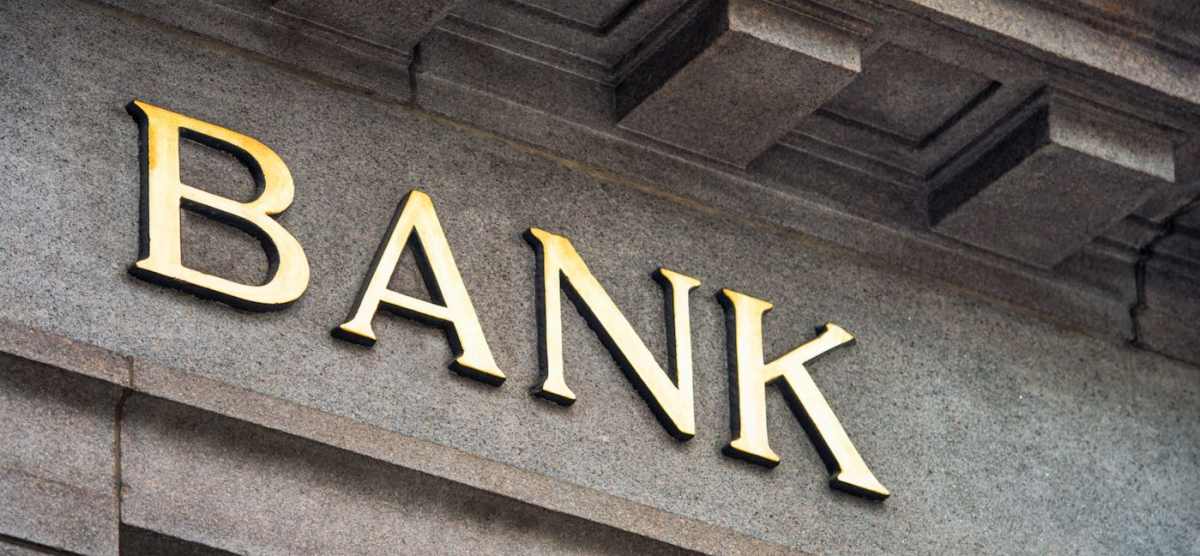Badania rynku bankowości detalicznej

Retail banking has mass-market appeal. It is also known as consumer banking. Under this model, the local branches of large commercial banks set up special units to meet the needs of their clients. Retail banking units are designed to be the one-stop shop for as many financial services as possible.
What Is Retail Banking Market Research?
Retail banking market research analyzes consumer behaviors, market trends, and the competitive landscape, aiming to furnish stakeholders with profound insights of the retail market. It delves deep into customer satisfaction metrics, service delivery efficiency, and the burgeoning suite of financial products, ensuring that banks are proactive in their market strategies
Why Businesses Need Retail Banking Market Research
Retail banking market research is instrumental in risk management. This research offers insights into market trends, potential threats, and opportunities, allowing banks to position themselves in a way that balances risk and return effectively.
It is also key in product development and innovation. Retail banking market research provides a clear understanding of customer needs and preferences, driving the development of products and services that exceed customer expectations. It’s about aligning innovation with market demand, ensuring that every new offering is a strategic step towards greater market share and customer loyalty.
Furthermore, retail banking market research provides a granular view of customer satisfaction, loyalty drivers, and switching behaviors, enabling banks to craft targeted strategies that bolster customer retention and attract new clients.
Functions of Retail Banking

The three main functions of retail banking are:
- To lend money: Retail banking units offer mortgages and other types of loans to their clients
- To accept deposits: A retail banking unit is a secure place for those who want to deposit their savings
- To manage funds: Retail banking offers clients different types of accounts and cards. These instruments put them in control of their spending
Features of Retail Banking
Retail banking is devoted to financial service products. These products include checking and savings accounts, money market instruments, and home and business loans. This type of banking focuses on the needs of consumers. Individual account holders get more attention than commercial clients. Retail banking also uses the inside and outside of branches to promote and cross-sell services.
Objectives of Retail Banking
Retail banking adapts services to meet consumer needs. For example, most banks are parties to the Zelle cash app. This app enables consumers to transfer funds to their peers in a few clicks. It is a quick, convenient way to make payments, and is very popular among retail banking customers.
Retail banking also tries to satisfy all the banking needs of customers. Banks try to retain customers by offering them the same products and services as their competitors.
Advantages of Retail Banking
The main advantage of retail banking is that it increases a bank’s business. It also helps to improve brand recognition. Another advantage is that retail consumers do not threaten a bank’s solvency. Retail loans seldom place a strain on the bank’s balance sheets. The third advantage is that retail customers tend to have more brand loyalty. Once the bank provides excellent customer service and their funds are safe, they will not switch. Instead, they will continue to be loyal clients for years.
Who Uses Retail Banking Market Research

Retail banking market research is a crucial tool that serves a diverse array of stakeholders within the financial ecosystem. Its comprehensive insights and strategic implications extend far beyond a bank’s executive boardroom.
Instytucje finansowe are the primary benefactors of retail banking market research. For these entities, the insights gleaned from the research are strategic assets that inform critical decisions. From the C-suite executives formulating corporate strategies to the product managers designing the next big financial product, this research provides a foundation of knowledge that guides actions and shapes the future of banking services.
Risk management and compliance officers also find great value in retail banking market research. The financial sector is fraught with risks ranging from credit defaults to regulatory non-compliance. This research offers a panoramic view of the market landscape, helping these professionals anticipate and mitigate risks before they materialize into significant threats.
Dodatkowo, customer service departments utilize insights from retail banking market research to enhance the customer experience. By understanding the needs, pain points, and satisfaction drivers of customers, these departments can refine their service delivery, ensuring that every customer interaction is both efficient and delightful.
Lastly, fintech companies and startups leverage this research to carve their niche in the financial services sector. By understanding the gaps and opportunities in the market, these innovators can develop solutions that address unmet customer needs, thereby disrupting and advancing the industry.
How Is Retail Banking Market Research Conducted?

Metody badań ilościowych are a cornerstone of retail banking market research. Surveys and questionnaires are extensively used to collect a vast amount of data directly from customers. This data is statistically analyzed to understand customer preferences, behaviors, and trends on a broad scale.
On the other hand, qualitative research methods add depth to the insights gathered. Techniques such as focus groups and in-depth interviews offer a nuanced understanding of customer attitudes, motivations, and feelings. These insights are particularly valuable in understanding the ‘why’ behind customer behaviors, providing a rich context to the quantitative data.
Segmentacja rynku is another critical aspect of retail banking market research. This approach involves dividing the broader market into smaller segments based on certain criteria such as demographic, geographic, psychographic, and behavioral factors. It allows banks to tailor their products, services, and marketing efforts to meet the specific needs of each segment, ensuring higher relevance and engagement.
Competitor analysis is also integral to this research. It involves assessing the strategies, products, services, strengths, and weaknesses of competitors. This analysis provides banks with a comparative view of the market, helping them identify opportunities for differentiation and strategic advantage.
Expected Results from Retail Banking Market Research.
• Comprehensive Market Understanding: Retail banking market research delivers a panoramic view of the market landscape. This encompasses market size, growth trends, and key drivers, painting a comprehensive picture of the current market scenario and its potential future directions.
• In-depth Competitive Analysis: Retail banking market research meticulously dissects the competitive environment. It highlights the strategies, product offerings, and market positioning of key players, offering insights into their strengths and weaknesses. This competitive intelligence is pivotal for banks to carve out a niche and stay ahead in the game.
• Optymalizacja produktów i usług: Businesses can expect this research to shed light on the effectiveness and reception of various banking products and services. It identifies gaps in the current offerings and pinpoints opportunities for innovation, guiding banks in refining their product portfolio to better meet customer needs.
• Regulatory Compliance and Impact: With the banking sector being one of the most regulated industries, this research offer insights into regulatory changes and their potential impact on the market. Understanding these regulatory dynamics is crucial for banks to ensure compliance and adapt their strategies accordingly.
Current Trends in Retail Banking Market Research

Retail banking market research is continually evolving. Therefore, understanding these trends is pivotal for banks and financial institutions to remain competitive and relevant.
• Transformacja cyfrowa: There’s a growing focus on understanding digital banking adoption, user experience on digital platforms, and the integration of technologies like AI and blockchain. Research is delving into how these technologies can optimize operations, enhance customer experience, and open new revenue streams.
• Customer Experience and Personalization: Banks are increasingly recognizing the importance of customer experience as a key differentiator. Retail banking market research is focusing on understanding customer journeys, pain points, and expectations from banking services.
• Zrównoważony rozwój i odpowiedzialność społeczna: There’s a growing trend in understanding the impact of banking services on society and the environment. Market research is exploring customer attitudes towards sustainable banking practices and how banks can align their operations with broader social and environmental goals.
• Fintech and Disruption: The rise of fintech companies has disrupted the traditional banking model. Retail banking market research is keenly observing this trend, analyzing the competitive landscape, and assessing the threats and opportunities posed by these new entrants.
Common Questions
What are the Types of Retail Banking?
There are two main types of retail banking. The first can be found within commercial banks. These banks profit from interest rate spreads and transaction fees. The spread is the difference between what the bank charges for loans and how much it pays on deposits. The other type of retail banking is credit unions. This type of institution offers the same services as commercial banks but on a smaller scale.
What is the Difference Between Retail Banking and Commercial Banking?
People often use the terms “retail” and “commercial” banking interchangeably. Retail banking refers to a division within a commercial bank that handles individual customers. But commercial banks don’t cater only to individuals. They also provide services to a wide range of businesses of varying sizes.
What is the Difference Between Retail Banking and Investment Banking?
An investment bank makes money by selling securities to companies and the government. These banks also offer advisory services to large businesses. Corporations consult with them about buyouts and mergers. Morgan Stanley is one of the biggest investment banks in the United States. Another major investment bank is Goldman Sachs. Retail banking, in contrast, offers more mundane financial services to individuals.
Why is Retail Banking Market Research Important?
There’s a real need for market research in the retail banking sector. Market research helps banks to spot business opportunities. For example, they can partner with other banks. They can also create new products or improve the ones they already have. If they need to expand, market research helps them find new locations. It enables them to lower business risks. It also allows them to create promotional materials to sell their products and services.
Lokalizacja naszego obiektu w Nowym Jorku
11 E 22nd Street, piętro 2, Nowy Jork, NY 10010 T: +1(212) 505-6805
O firmie SIS International
SIS Międzynarodowy oferuje badania ilościowe, jakościowe i strategiczne. Dostarczamy dane, narzędzia, strategie, raporty i spostrzeżenia do podejmowania decyzji. Prowadzimy również wywiady, ankiety, grupy fokusowe i inne metody i podejścia do badań rynku. Skontaktuj się z nami dla Twojego kolejnego projektu badania rynku.



